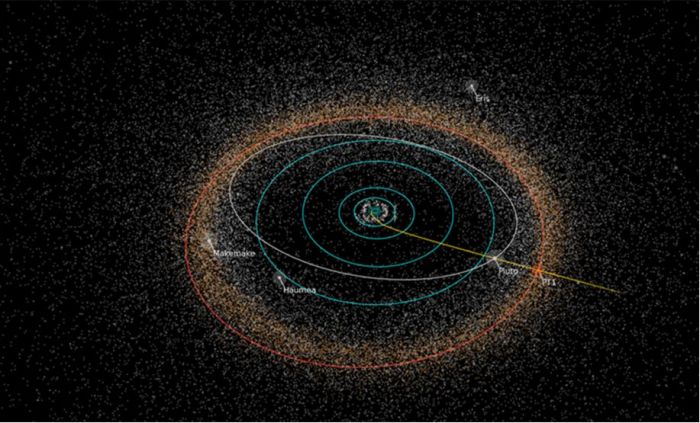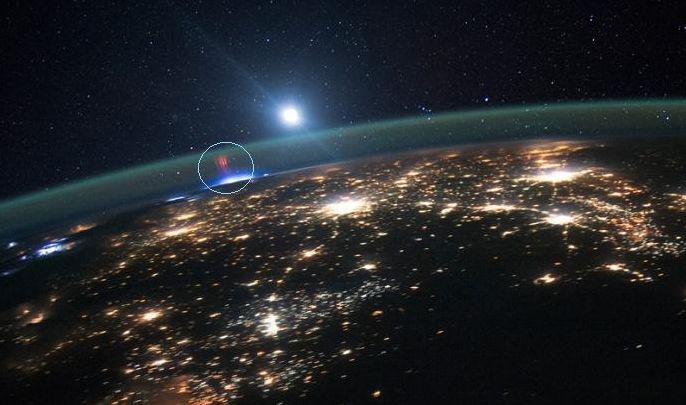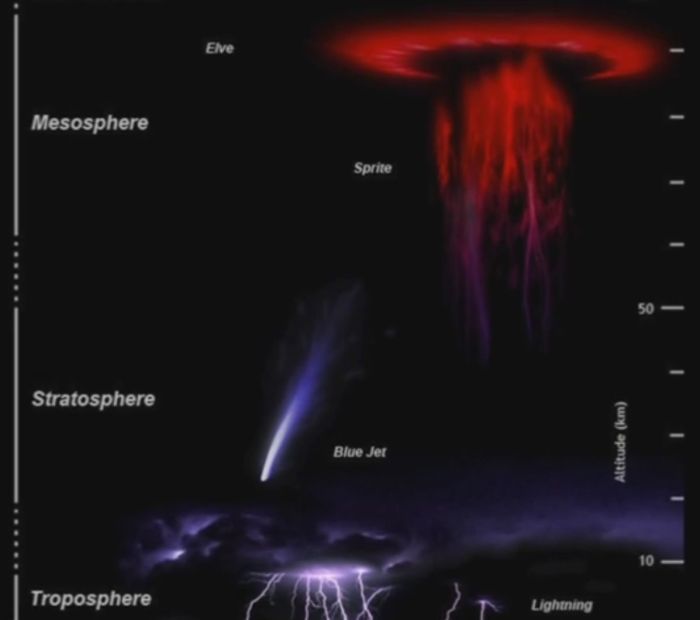 Curiosity, NASA’s Mars Science Laboratory rover has departed “Marias Pass”, a geological contact zone between different rock types on the slopes of “Mount Sharp”, some of which yielded unexpectedly high silica and hydrogen content.
Curiosity, NASA’s Mars Science Laboratory rover has departed “Marias Pass”, a geological contact zone between different rock types on the slopes of “Mount Sharp”, some of which yielded unexpectedly high silica and hydrogen content.
As noted in a recent space update in these pages, silica is primarily of interest to scientists, because high levels of it within rocks could indicate ideal conditions for preserving ancient organic material, if present. However, as also previously noted, it may also indicate that Mars may have had a continental crust similar to that found on Earth, potentially signifying the geological history of the two worlds was closer than previously understood. Hydrogen is of interest to scientists as it indicates water bound to minerals in the ground, further pointing to Gale Crater having once been flooded, and “Mount Sharp” itself the result of ancient water-borne sediments being laid down over repeated wet periods in the planet’s ancient past.
Curiosity actually departed “Marias Pass” on August 12th, after spending a number of weeks examining the area, including a successful drilling and sample-gathering operation at a rock dubbed “Buckskin”, where the rover also paused to take a “selfie”, which NASA released on August 19th. It is now continuing its steady climb up the slopes of “Mount Sharp.”

As it does so, initial analysis of the first of the samples gathered from “Buckskin” is under-way. It is hoped with will help explain why the “Marias Pass” area seems to have far higher deposits of hydrogen bound in its rocks than have previously been recorded during the rover’s travels. This data has been supplied by the Dynamic Albedo of Neutrons (DAN) instrument on Curiosity, which almost continuously scans the ground over which the rover is passing to gain a chemical signature of what lies beneath it.
“The ground about 1 metre beneath the rover in this area holds three or four times as much water as the ground anywhere else Curiosity has driven during its three years on Mars,” said DAN Principal Investigator Igor Mitrofanov of Space Research Institute, Moscow, when discussing the “Marias Pass” DAN findings. Quite why this should be isn’t fully understood – hence the interest in what the drill samples undergoing analysis might reveal.

The drilling operation itself marked the first time use of the system since a series of transient short circuits occurred in the hammer / vibration mechanism in February 2015. While no clear-cut cause for the shorts was identified, new fault protection routines were uploaded to the rover in the hope that should similar shorts occur in the future, they will not threaten any of Curiosity’s systems.
A Flight over Mars
With all the attention Curiosity gets, it is sometimes easy to forget there are other vehicles in operation on and around Mars which are also returning incredible images and amounts of data as well – and were doing so long before Curiosity arrived.
One of these is Europe’s Mars Express, the capabilities of which come close to matching those of NASA’s Mars Reconnaissance Orbiter. Mars Express has been in operation around Mars for over a decade, and in that time has collected an incredible amount of data.
At the start of August, ESA released a video made of high resolution images captured by the orbiter of the Atlantis Choas region of Mars. This is an area about 170 kilometres long and 145 wide (roughly 106 x 91 miles) comprising multiple terrain types and impact craters, thought to be the eroded remnants of a once continuous ancient plateau. While the vertical elevations and depressions have been exaggerated (a process which helps scientists to better understand surface features when imaged at different angles from orbit), the video does much to reveal the “magnificent desolation” that is the beauty of Mars.
New Horizons: New Target
In July, NASA’s New Horizons spacecraft completed the first-ever flyby of the Pluto-Charon system (see my mission coverage for more information). While all the data gathered during the flyby will still take several months to be completely returned to Earth, a potential new target for examination has been selected for the mission.
It is what is called a Kuiper Belt Object (KBO) and is unglamorously designated 2014 MU69. It orbits the Sun at almost 1.6 billion kilometres (1 billion miles) beyond Pluto, and one of two such objects within the Kuiper belt under consideration as a future target for the spacecraft to study.

However, this doesn’t mean the extended mission will go ahead. While New Horizons was always outfitted to undertake one or perhaps two KBO studies following the Pluto-Charon encounter, any additional studies have yet to be fiscally approved; something which won’t happen until early 2016. Nevertheless, the choice of the object, now dubbed “PT-1” (Potential Target 1), means the vehicle can be commanded to start adjusting its course for a flyby early enough that it will use less fuel to do so than if it is left until after any formal fiscal approval is given for the flyby to go ahead, thus allowing New Horizons to retain more fuel reserves for later in the mission.
2014 MU69 was only discovered in 2014 by the Hubble Space Telescope. It is estimated to be about 45 kilometres (30 miles) across, making it about 10 times larger than comet 67P/C-G currently being studied by Europe’s Rosetta mission. Given its size, it could be similar in nature to the “building blocks” of Kuiper belt debris which accreted over time to form dwarf worlds like Pluto, Charon and Eris.
Providing the extended mission is funded – as currently seems likely – then New Horizons will reach 2014 MU69 in January 2019.
Dawn Commences New Ceres Mapping Phase

Dawn, the NASA / ESA joint mission to explore the inner solar system “protoplanets” of Vesta and Ceres, has commenced the third in its series of surface mapping missions around the latter.
Now occupying an orbit some 1,470 km (915 miles) above Ceres, the spacecraft completed one survey of the planetoid’s entire surface every 11 days, orbiting Ceres 14 times in the process. The plan is for the craft to complete 6 such surveys prior to moving into its lowest orbit of just 375 kilometres (230 miles) in October.
At its current altitude. Dawn can resolve objects down to a size of 140 metres (450 ft) per pixel, with each image captured representing less than 1% of the planetoid’s surface. In particular, this mapping orbit is allowing the mission time to make extensive use of the vehicle’s framing camera in order to build 3D models of surface features in order to help understand their nature and possible formation.
As well as image mapping Ceres’ surface, Dawn is also using its on-board spectrometer to gather more data on the chemical and mineral composition of surface material, and is also examining Ceres’ gravity field, which has already caused considerable interest given it is somewhat greater than expected for a body of this size.
At the time of writing, Dawn had yet to return new images of one surface feature in particular that has been giving rise to much speculation (and not a little highly imaginative thinking in some quarters): the bright spots within the crater Occator, which may be linked to a highly localised atmosphere within the crater. However, images have been returned of another surface feature which has also caused excitement among planetary scientists.
This is the “table mountain” in the planetoid’s southern hemisphere with bright streaks on its flanks, suggestive that material may have once flowed down it.

In the new images, the mesa-like mountain has been seen from almost directly overhead, with its height now thought to be around 6 kilometres (4 miles) above the mean surface level of the surrounding plains. The bright streak on is flanks are clearly visible in the images, which also reveal that if they were the result of material having once flowed down the slopes, there seems to be an odd lack of debris around the base of the mountain, which has a very well-defined perimeter when compared to the surrounding plain.
Expect more to come on this mission.
Sprites Seen From Orbit
On August 24th, NASA released photographs taken from the International Space Station which show very rare “red lightning”, known as “sprites”, occurring high up in the Earth’s atmosphere.

There is a lot of mystery surrounding these sprites, which were only first witnessed in 1989, as they are exceptionally short-lived (in the order of milliseconds), and are almost impossible to see from the surface of Earth as they tend to occur above thunderstorms. Thus, studying them and understanding them is exceptionally difficult.
While this isn’t the first time sprites have been imaged from orbit, the images, captured on August 10th, 2015, are perhaps the first time the phenomena have been seen in two different locations at almost the same time. As it passed over the USA and Mexico, the ISS captured the first occurrence over the US Midwest, and then 3 minutes later, a further sprite was imaged above a thunderstorm over Acapulco, Mexico.

It is thought that sprites might be caused by ‘positive[ly charged] lightning’, which has a charge around 10 times the strength of the more usual “negative[ly charged] lightning”, and which is potentially strong enough to break apart molecules in the atmosphere into ions, forming a cold plasma cloud. If so, it is these ions, colliding with other molecules in the upper atmosphere which give sprites their red hue.
Binary Black Hole Powered Galaxy
Studies of images and data gathered by the Hubble Space Telescope reveal that the galaxy Markarian 231 (Mrk 231 / UGC 8058), the nearest galaxy to our own that is home to a quasar, is powered by two black holes locked in orbit around one another.

The study suggests that quasars, which lie at the centre of active galaxies, may commonly have two gigantic black holes, referred to as “supermassive” black holes, within them rather than the single black hole usually conjectured, and that these could be the result of galaxies “colliding” with one another.
In Mrk 231’s case, it appears the two black holes are the result of the huge mass of that galaxy meeting and absorbing a smaller galaxy in its past, with the smaller of the two black holes – estimated to have a mass 4 million times that of the Sun, becoming locked in a binary orbit with Mrk 231’s original, and larger, black hole, which is estimated to be 150 million times more massive than the Sun. They are gradually spiralling together, and will collide within a few hundred thousand years.

The result of this is that Mrk 231, which is around 600 million light years from our own Milky Way galaxy, is a highly active galaxy, with a star-formation rate 100 times greater than our own, the result of gas “falling” into the combined gravity wells of the black holes triggers tremendous outflows and turbulence which creates new stars.
All images courtesy of NASA / JPL unless otherwise indicated. Video courtesy of ESA Planetary Sciences.
So many amazing things! Beautiful article 🙂
LikeLike
Glad you enjoyed it :).
LikeLike